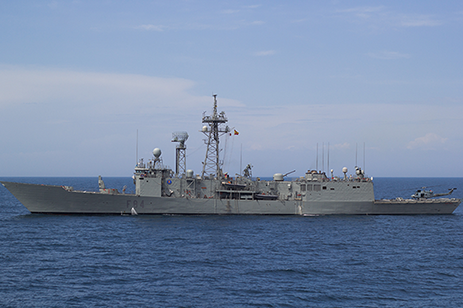
Many new signals intelligence (SIGINT) and electronic warfare (EW) systems are being deployed on small platforms, but they still require sophisticated capabilities, such as multi-channel, multi-board coherency that enables beamforming. System designers can meet these demands with powerful field programmable gate array (FPGA) technology built on the 3U OpenVPX form factor.
For SIGINT Beamforming, Multi-Channel Coherency is Critical.
For many SIGINT and EW systems, the ability to accurately identify a signal’s direction is essential; in some situations it could be a matter of life and death. Beamforming is a signal processing technique that enables direction finding with an array of antenna.
Beamforming works on the principal that differences in time of arrival for a signal at each antenna are proportional to differences in path distance from the source. By adjusting the gain and phase in each path, the antenna is electronically ‘steered’ (without physical movement) to locate the arrival angle of a signal; two or more arrays are used to triangulate the location of the signal source.
For all this to work, the input channels from each antenna must be coherent, which requires precise clock timing and synchronization. In deployed systems, the antenna will be at different points on a platform: the wing tips, nose and tail of an aircraft, for example. To maintain coherence across the input from these antennas, all sensor inputs must be precisely aligned, and the captured data must be calibrated and time-stamped. For all but the smallest systems, this multi-channel synchronization must extend across multiple analog inputs on multiple boards that are processing the analog inputs. The accuracy of this synchronization defines the baseline accuracy of direction finding.
New Demands of SIGINT and EW Systems
Today’s SIGINT and EW systems face additional, growing challenges in two dimensions:
- They must operate at higher and higher frequencies, as adversaries seek to avoid detection by moving communications into the L-band. Coherence at higher frequencies demands extremely precise clocking and very low latency processing of signals. The requirement for lower latencies puts a premium on high performance parallelization of beamforming algorithms.
- Sophisticated SIGINT and EW systems must meet size weight and power (SWAP) constraints of smaller platforms due to the growing need to occupy positions closer to the warfighter.
To meet these SIGINT and EW performance challenges, especially those for low latency processing, system designers have adopted FPGAs. For high-speed digitization, the use of devices like FPGAs is usually the only practical way to catch and process the data. After an analog to digital converter (ADC) digitizes a signal, it moves to an FPGA that acts on it. For beamforming, this includes digital down conversion and filtering, then gain and phase adjustments.
Because they can implement extreme parallelism (with hundreds of digital signal processor blocks operating in parallel), FPGAs are very well suited for processing intensive beamforming operations. As new generations of FPGAs evolve, they deliver more performance and greater input/output (I/O) capability, allowing new designs to keep pace with more stringent requirements.
A leading solution: The VPX3-530 3U OpenVPX Xilinx Virtex-7 FPGA ADC/DAC
The Curtiss-Wright VPX3-530 is a board designed to meet SIGINT and EW requirements for low latency beamforming operations with multi-channel, multi-board coherency. It is a rugged dual channel ADC/DAC packaged in the compact 3U OpenVPX form factor with a user-programmable Xilinx Virtex-7 FPGA, enabling highly effective SIGINT and EW implementations on small platforms.
For detailed product information, please read the white paper or contact us.